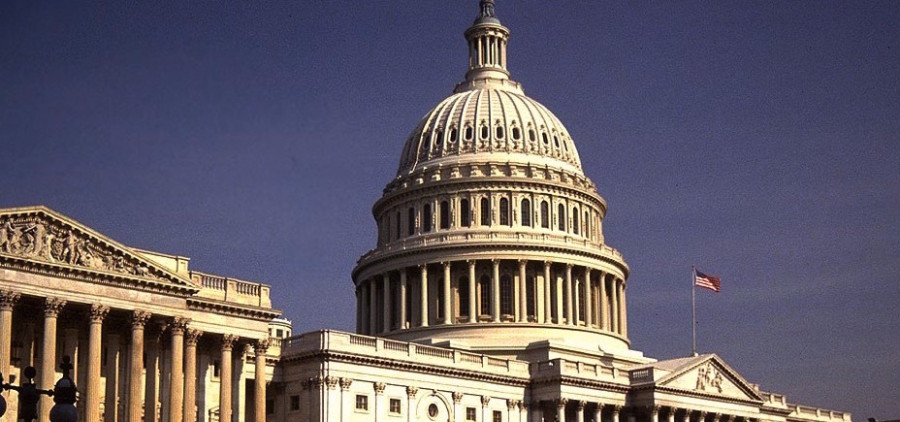Even before he launched his distance learning classroom last week, middle school band director Blake Bogan knew he faced some unique challenges. “Most of my job is listening to students and helping them mix and blend their sound with their peers,” says Bogan, who teaches at Raceland Middle School in Raceland, La.
It’s a rural town of roughly 10,000 about an hour’s drive southwest of New Orleans.
Since perfecting the mix and blend of a full band isn’t possible online, Bogan, now in his ninth year of teaching, plans to focus more on music theory, reading notes on the staff, and rhythm exercises the group can do together in Google Classroom.
But there’s one problem Bogan can’t solve on his own: the “homework gap,” or the inability to do schoolwork at home due to the lack of internet access. Any chance schools have of closing that gap lies with Congress: Lawmakers must allocate the desperately needed funding and choose the most efficient mechanism to distribute it.
Some of Bogan’s students have no access to the internet at home, and because of the pandemic, can no longer spend time in school buildings, libraries, cafes, or friends’ houses—the places they may have accessed Wi-Fi in the past.
“Statewide, roughly 30 percent of students have no access to internet service, and/or a device,” says Bogan, president of the Lafourche Parish Association of Educators. “The areas hit hardest are rural, low-income families. Those students are going to be left behind the most.”
 Blake Bogan
Blake Bogan
Louisiana is one of ten states, primarily in the South, with the lowest rates of household broadband access. The gap disproportionately affects students of color and low-income students, as well as those in rural areas.
Bogan’s district hasn’t shared exact data on how many students lack the high-speed internet service required to run video conferencing and file sharing applications that districts are relying on while schools are closed due to the pandemic. But 76 percent of students at Raceland Middle School are from lower-income families, based on free and reduced-price lunch data.
“Most of them are generationally poor from the start, and it’s only going to get worse if they don’t have access to the basic technology they need to keep up and stay in school,” says Bogan.
A New Light
Educators know that this specific aspect of the digital divide known as the “homework gap” is not new. Sadly, it took a global pandemic to bring the issue to the forefront.
Based on research conducted in 2017 and 2018—years before the coronavirus outbreak—this digital “homework gap” already affected somewhere between 8.5 to 12 million K-12 students.
According to a 2019 Pew Research Center report, 37 percent of rural Americans have no broadband internet service at home, trailing urban residents by 12 points and suburban residents by 16 points.
 Shawna Mott-Wright
Shawna Mott-Wright
Minority households fall deepest into the homework gap. Pew research shows that among families with school-age children, 25 percent of all black households and 23 percent of Hispanic households lack high-speed internet. Only 10 percent of white households with school children lack high-speed internet access.
Since the start of school shutdowns, which now include almost all U.S. schools, districts have scrambled to provide various devices, including laptops and tablets, to help students access distance learning. But only one in four districts is able to loan out Wi-Fi hotspots.
“People like to talk about opportunity all the time, but I always say without access, opportunity means nothing,” says Oklahoma drama and speech teacher Shawna Mott-Wright. “This is one of those moments where it all comes down to access.”
She estimates that as many as half of her students at Tulsa’s Memorial High School—where more than 80 percent of students are from lower-income families—can’t engage in distance learning. They either don’t have devices, or they don’t have high speed internet access.
We Can Fix This
As dire as the “homework gap” statistics are, there is broad agreement among education groups that Congress can make a difference for millions of students by appropriating emergency funding for E-Rate, a program originally established with bipartisan unity to make sure all schools and libraries were connected to the internet. E-Rate increased public school internet connections from 14 percent in 1998 to nearly 100 percent today.
 Following a 2014 modernization, E-Rate now ensures that schools and libraries have ample bandwidth to meet educational needs for all students and patrons. Educators want Congress to invest in this established and successful program to disseminate funds quickly to schools for the purchase of Wi-Fi hotspots, modems, routers, and devices students and educators need to participate in online learning.
Following a 2014 modernization, E-Rate now ensures that schools and libraries have ample bandwidth to meet educational needs for all students and patrons. Educators want Congress to invest in this established and successful program to disseminate funds quickly to schools for the purchase of Wi-Fi hotspots, modems, routers, and devices students and educators need to participate in online learning.
In the three previous COVID-19 relief packages, Congress failed to include the emergency E-Rate funding that House Speaker Nancy Pelosi and Senate Leader Chuck Schumer proposed. Education leaders were dismayed.
“We cannot comprehend why Congress refused to provide adequate direct funding for Wi-Fi hotspots, connection devices and mobile wireless service through the existing and successful E-Rate program to help our students most in need,” said NEA President Lily Eskelsen García, a former elementary teacher, when the last COVID package went through without additional funding for E-Rate.
“With tens of millions of students at home and educators seeking ways to deliver instruction, every student needs the technology to ensure they don’t fall behind. Our request of $2 billion to address the ‘homework gap’ is a drop in the bucket in a multi-trillion-dollar bill.”
Risk and Loss
The “homework gap” doesn’t only affect students. Some educators also struggle with limited internet access.
Melissa Ngo describes her Florida town, Coleman, as “fairly rural, but it’s not like I’m in the middle of the Everglades. I live 20 minutes from my school, and it’s not even possible to get DSL.” The only high-speed internet option for her local community is “super-expensive satellite internet” that runs about $80 a month for 50 gigs.
Instead, Ngo’s family uses a hotspot that tends to get overwhelmed during the day, making it hard for her to participate in video conference meetings. Some of her colleagues risk their health reporting to school every day, because they simply can’t get reliable internet access any other way.
High-speed internet access will be ensured for educators, too, if Congress acts to distribute emergency funds quickly through E-Rate.
 Mott-Wright, the Oklahoma drama teacher, says the need couldn’t be more urgent. As a local president, she regularly gets phone calls from educators in tears over not being able to connect with their students.
Mott-Wright, the Oklahoma drama teacher, says the need couldn’t be more urgent. As a local president, she regularly gets phone calls from educators in tears over not being able to connect with their students.
“They are totally and completely consumed with worry for their students,” Mott-Wright says. “They want to connect with each and every student online, preferably using video so that they can look into their faces and see their reactions when they ask if kids are okay.”
Many of her students are being raised by caretakers who are not their parents, she explains, and “there’s already a certain level of trauma that goes along with that.”
Her school is distributing paper learning packets at meal pick-up locations to try to reach families with no internet connection. But that’s no replacement for being able to interact with the educators students are used to seeing every school day.
“It’s not just academic learning that they’re missing out on right now,” says Mott-Wright. “A lot of students simply need us in their lives.”






